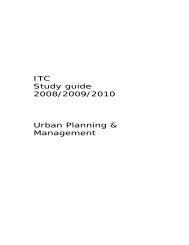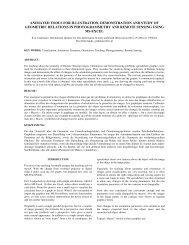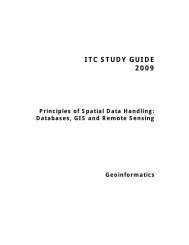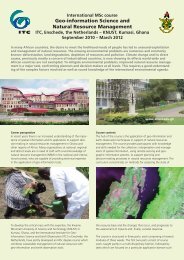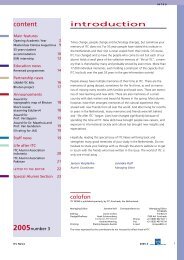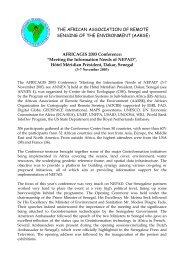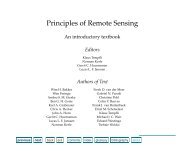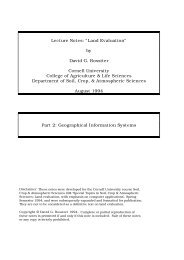Sensitivity Analysis of Soil Site Response Modelling in Seismic ... - ITC
Sensitivity Analysis of Soil Site Response Modelling in Seismic ... - ITC
Sensitivity Analysis of Soil Site Response Modelling in Seismic ... - ITC
You also want an ePaper? Increase the reach of your titles
YUMPU automatically turns print PDFs into web optimized ePapers that Google loves.
ased site-dependent amplification factors. For the classification scheme <strong>of</strong> the site, they have used<br />
SHAKE91 and checked the responses. And, observed that an <strong>in</strong>crease <strong>in</strong> depth shifts the fundamental<br />
period, where amplification is most significant, toward higher values. Also added that, the significantly<br />
higher response at longer periods for deep soil deposits is an important expected result that<br />
should be accommodated <strong>in</strong> a seismic site response evaluation (Rodriguez-Marek and and Bray 1999).<br />
Overall, it can be concluded that one dimensional soil column analysis is a practical method and<br />
widely used <strong>in</strong> many studies and the applications have varieties <strong>in</strong> soil site effect analysis.<br />
Advanced methods<br />
Advanced methods refer to the different models that have been proposed to <strong>in</strong>vestigate several <strong>of</strong> the<br />
various aspects <strong>of</strong> site effects. These aspects usually <strong>in</strong>volve complex phenomena. Various types <strong>of</strong><br />
<strong>in</strong>cident wave fields, such as near field (comparable or shorter than the wavelength concerned.), far<br />
field (It is used to refer a distance to a seismic source longer than the wavelength concerned), body<br />
waves, surface waves should be considered. The structure geometry may be 1D, 2D or 3D (Figure 2-<br />
11). Or, the mechanical behaviour <strong>of</strong> materials may have a very wide range like, viscoelasticity (Viscoelastic<br />
materials are those for which the relationship between stress and stra<strong>in</strong> depends on time),<br />
non-l<strong>in</strong>ear behaviour, water-saturated media and liquid doma<strong>in</strong>s.<br />
Figure 2-11 Subsurface geology could be referred as one-dimensional, two-dimensional or threedimensional<br />
(Smith 2001).<br />
Lacave et. al (2002) have dist<strong>in</strong>guished these complex conditions <strong>in</strong>to four.<br />
1. Analytical methods<br />
2. Ray methods<br />
3. Boundary based techniques<br />
4. Doma<strong>in</strong> based techniques<br />
Above mentioned methods need heavy computational processes, on the other hand their flexibility and<br />
versatility have leaded the way to the understand<strong>in</strong>g <strong>of</strong> the site effects.<br />
In one-dimensional response analysis the soil structure is essentially horizontal. However the conditions<br />
<strong>of</strong> other structures should also be taken <strong>in</strong>to account. Slop<strong>in</strong>g or irregular ground surfaces, the<br />
32<br />
<strong>Sensitivity</strong> <strong>Analysis</strong> Of <strong>Soil</strong> <strong>Site</strong> <strong>Response</strong> <strong>Modell<strong>in</strong>g</strong> In <strong>Seismic</strong> Microzonation For Lalitpur, Nepal



